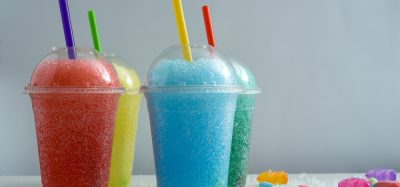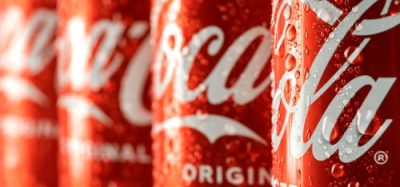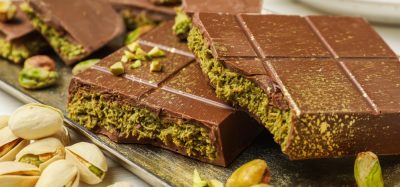A guide to colouring foods
- Like
- Digg
- Del
- Tumblr
- VKontakte
- Buffer
- Love This
- Odnoklassniki
- Meneame
- Blogger
- Amazon
- Yahoo Mail
- Gmail
- AOL
- Newsvine
- HackerNews
- Evernote
- MySpace
- Mail.ru
- Viadeo
- Line
- Comments
- Yummly
- SMS
- Viber
- Telegram
- Subscribe
- Skype
- Facebook Messenger
- Kakao
- LiveJournal
- Yammer
- Edgar
- Fintel
- Mix
- Instapaper
- Copy Link
Posted: 27 April 2021 | Adiguna Bahari, Natalia Teribia, Sharmaine Atencio | No comments yet
Marrying the increased appeal of clean label with the continued desire for visually attractive products, three experts discuss the rise of natural colouring foods.
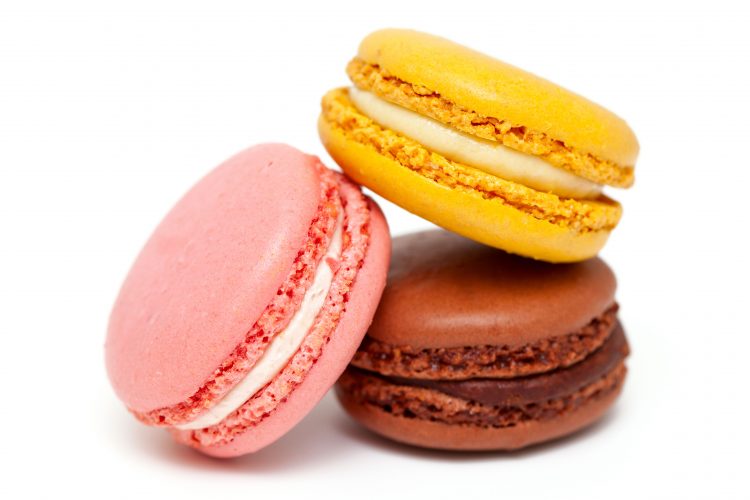

It is often said that we eat with our eyes, making colour one of the most important factors for judging the quality of a food product.
Colouring food dates back centuries; a technique used by our ancestors to make morsels more appealing and enhance its perceived quality. For example, the characteristic yellow hue of rice was obtained by adding saffron. By the end of the 19th century, in the USA and Europe, the use of colour additives in the food industry was an ingrained habit with popular products such as ketchup, mustard and sodas featuring artificial colourants like cochineal (E 120), tartrazine (E 102) and caramel IV (E 150d), respectively on their labels. The use of synthetic dyes rapidly increased due to their lower costs, ease of production, and greater colouring strength and stability compared to natural-derived additives. However, with time, safety concerns mounted and artificial colourants became a hotly debated topic.1
Consequently, they were gradually replaced by more natural colourants derived from plants and insects, although the use of chemicals, such as organic solvents (eg, methanol, hexane), is still commonplace during production. As a result, the ‘naturalness’, sustainability and healthiness of the resulting product can be disputed. Today, consumers are demanding clean labels (without additives) and sustainable food products. As such, colouring foods represent a promising alternative to colour additives.
What are colouring foods?
Colouring foods simply refers to food with colouring properties; they are usually derived from vegetables, fruits and edible plants that are naturally rich in pigments, such as carrots, pumpkins and blueberries.2
They are manufactured using non-chemical (enzymatic) and physical processes to extract the colouring pigments from the raw materials. These processes include washing, chopping, pressing, filtering, separating, concentrating, pasteurising and drying, wherein water is used as the preferred processing solvent.2 With these physical processes, the colouring pigments are not selectively extracted from the source material, so the colouring foods retain their inherent characteristics such as flavour, as well as their protein, sugar and lipid contents.3
Typically, colouring foods are in the form of colour-intensive viscous concentrates or powders. Since colouring foods are still food and can be consumed as such, they are labelled as ingredients and there are no dosage restrictions in a food product.
Additive food colours vs. colouring foods
Although ‘food colour’ (synthetic or natural) and ‘colouring foods’ have similar sounding names, they are different under EU regulation. Within Regulation (EC) No. 1333/2008, food colours are classified as food additives, while colouring foods are not, since they are, by definition, “normally consumed as food in itself” or “normally used as a characteristic ingredient of food”.2,4
“Unlike colouring foods, additive food colours are made by selective extraction of pigment and formulation with a cocktail of other agents.
Unlike colouring foods, additive food colours are made by selective extraction of pigment and formulation with a cocktail of other agents such as emulsifiers and preservatives, among others. To further guide manufacturers, the EU released the “Guidance Notes on the Classification of Food Extracts with Colouring Properties” in 2014, which provides criteria for deciding whether a colour extract is a food additive or a colouring food.5 Additive food colours have to be labelled as colour additives together with their E-number or their corresponding name (ie, colour: E102, or colour: tartrazine; colour: E120, or colour: carmine), while colouring foods are included in the ingredients list based on the source material (ie, yellow carrot concentrate, elderberry extract, grape juice, etc).2
Minimising colour degradation
When consumers purchase a product, they expect the colour and flavour to be consistent throughout its shelf life, but providing shelf-stable products with vibrant colours and tasty flavours is a big challenge.
Despite the benefits of using colouring foods as substitutes for synthetic dyes, these ingredients exhibit lower stabilities in a food product as compared to the latter, which can negatively influence the organoleptic properties of the final product. The stability of vegetable-, fruit- and flower-based pigments is dependent on several factors, including food matrix, temperature, pigment chemical structure, pH, water content, oxygen and light, to name a few.
Food matrix
As colouring foods still contain other raw material components, their addition may impact the chemical and physical properties of the food being coloured. In confectionery, for example, the inherent acids of a fruit or vegetable concentrate may induce sugar inversion and make the product sticky.3 Thus, the amount of colouring foods used should depend on the type of food application.
Moreover, the type of food matrix influences how the natural pigment is incorporated and stabilised in a product. For example, due to their lipophilic nature, carotenoids must be emulsified in water in order to colour beverage products. The pigment is dispersed in an oil phase, which is then subjected to homogenisation to obtain an oil-in-water emulsion stabilised by different emulsifiers. Further, to avoid oxidation in the food matrix, antioxidants such as tocopherols are added during the oil phase of the beverage emulsion.6
Temperature
Regarding temperature, pasteurisation or sterilisation is one of the most common measures applied to ensure microbial safety, but this thermal processing step might result in colour degradation. For example, the bright red colour of anthocyanins is replaced by a darker red colour.7 A strategy to mitigate these negative effects is to optimise the temperature profile of the heating process and to choose an appropriate raw material.8 It is known that the chemical structure of anthocyanins affects the thermostability of the pigment. Anthocyanins derived from purple sweet potatoes and black carrots are more stable during processing than strawberry anthocyanins, due to the presence of acylated anthocyanins that contain additional acyl groups (eg, phenolic acids) attached in their structure conferring stability.9
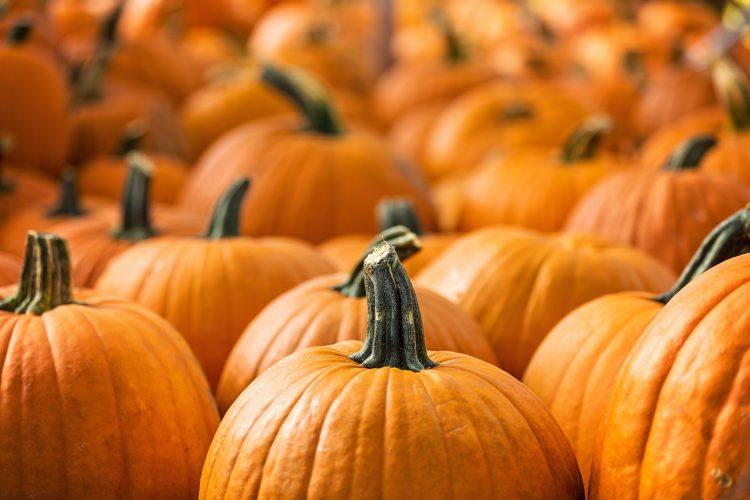

Pumpkins are used as a colouring food due to their vibrancy
Oxygen
The presence of oxygen either during processing or in the packaging negatively affects the stability of red (anthocyanins, betalains, lycopene), yellow orange (carotene) and green (chlorophyll) pigments. Oxygen removal during and after food processing is not straightforward, yet industry has developed different strategies to minimise oxidative reactions. For example, during production it is common to use closed systems to avoid the incorporation of air or else use nitrogen gas to prevent oxidation.10
The type of packaging material used for food products also influences oxygen levels during shelf life. Except for glass or metal cans, most packaging materials (eg, polyethylene terephthalate PET, high-density polyethylene) used in the beverages industry allow the diffusion of oxygen. To overcome this problem, the use of multilayer PET bottles or oxygen scavengers in the packaging material have been shown to limit colour degradation during storage.11
Light
Light also plays an important role in colour loss and other degradative reactions for specific natural pigments such as carotenoids, which can easily be degraded due to their conjugated double bond systems.12 Although many carotenoid‑coloured foods and beverages are displayed in store shelves exposed to artificial light, light exposure is minimised by use of non-transparent packaging (eg, metal cans, cartons, tinted bottles) or by putting sleeves in the bottles as part of labelling material.
Seaweed phycobiliproteins as a potential source of colouring foods
Algae, both micro and macro (seaweed), have promising potential as colouring foods due to the variety of colour pigments they contain.
In general, three types of pigments can be found in algae: chlorophylls, carotenoids and phycobiliproteins (PBP). PBP are a group of pigment-protein complexes unique to algae (eg, red seaweeds, blue-green algae). They consist of phycoerythrin (red pigment), phycocyanin (blue pigment) and allophycocyanin (light blue pigment). PBP are water soluble and can easily be extracted by using water or water-based buffers. It can also be further purified sequentially by ammonium sulfate precipitation, ion-exchange chromatography and freeze drying.13
However, as colouring foods, non-purified aqueous extract of the algae can already be used to impart colour (eg, spirulina extract for blue colour) to food products such as confections, ice cream, beverages and yoghurts,14 and does not require an E-number label inside the EU.


Understanding the stability of PBP is important in order to utilise it for food applications. In general, PBP are relatively stable at a range of pH 4-10,15 and this is one of their strengths. For example, red phycoerythrin could be an alternative to anthocyanin, since anthocyanin turns from red to blue at higher pH values.16 In terms of heat stability, some PBP start to show colour changes at 45°C. Interestingly, PBP from different algal sources may have different thermal stabilities. Reports show that PBP from the red microalgae porphyridium remains stable up to 65°C.16 These properties of PBP make them suitable as colours for neutral food applications (non-acidic/alkaline). As new foods keep evolving to satisfy the latest trends and demands, PBP from seaweed could be explored more closely as a potential natural and safe colouring food.
Acknowledgements
The authors gratefully acknowledge the financial support from the European Union’s Horizon 2020 Research & Innovation Programme under the Marie Skłodowska-Curie Grant Agreement N° 765415 (FOODENGINE). During their PhD, the authors were funded by this programme.
References
- Mcavoy S. (2014). “Global regulations of food colours. The Manufacturing Confectionery”. 77-87
- Stich E. (2016). Food color and coloring food: quality, differentiation and regulatory requirements in the European Union and the United States. In Handbook on Natural Pigments in Food and Beverages (pp. 3-27). Woodhead Publishing
- Ghidouche S, Rey B, Michel M, Galaffu N. (2013). A Rapid tool for the stability assessment of natural food colours. Food chemistry, 139(1-4), 978-985
- Melchor SR, Di Mario A. (2014). Legislative update. Agro FOOD Industry Hi Tech, 25, 3
- Reinhart A. (2014). Colouring Foods versus Food Colours: Guidance Notes on the Classification of Food Extracts with Colouring Properties. European Food and Feed Law Review, 9(2), 105-113
- Mesnier X, Gregory C, Fança-Berthon P, Boukobza F, Bily A. (2014). Heat and light colour stability of beverages coloured with a natural carotene emulsion: Effect of synthetic versus natural wate- soluble antioxidants. Food research international, 65, 149-155
- Teribia N, Buvé C, Bonerz D, Aschoff J, Hendrickx M, Van Loey A. (2021). Impact of processing and storage conditions on color stability of strawberry puree: The role of PPO reactions revisited. Journal of Food Engineering, 294, 110402
- Fernández-López JA, Angosto JM, Giménez PJ, León G. (2013). Thermal stability of selected natural red extracts used as food colorants. Plant Foods for Human Nutrition, 68(1), 11-17
- Assous MTM, Abdel-Hady MM, Medany GM. (2014). Evaluation of red pigment extracted from purple carrots and its utilization as antioxidant and natural food colorants. Annals of Agricultural Sciences, 59(1), 1-7
- Cortez R, Luna‐Vital DA, Margulis D, Gonzalez de Mejia E. (2017). Natural pigments: stabilization methods of anthocyanins for food applications. Comprehensive Reviews in Food Science and Food Safety, 16(1), 180-198
- Buvé C, Kebede BT, De Batselier C, Carrillo C, Pham HT, Hendrickx M, Van Loey A. (2018). Kinetics of colour changes in pasteurised strawberry juice during storage. Journal of Food Engineering, 216, 42-51
- Limbo S, Torri L, Piergiovanni L. (2007). Light-induced changes in an aqueous β-carotene system stored under halogen and fluorescent lamps, affected by two oxygen partial pressures. Journal of agricultural and food chemistry, 55(13), 5238-5245
- Galetović A, Seura F, Gallardo V, Graves R, Cortés J, Valdivia C, Gómez-Silva B. (2020). Use of Phycobiliproteins from Atacama Cyanobacteria as Food Colorants in a Dairy Beverage Prototype. Foods, 9(2), 244
- FDA. U.S. Food and Drug. Summary of Colour Additives for Use in the United States in Foods, Drugs, Cosmetics and Medical Devices. Available online: https://www.fda.gov/industry/color-additive-inventories/summary-color-additives-use-united-states-foods-drugs-cosmetics-and-medical-device (accessed on 31 Dec 2020)
- Yan SG, Zhu LP, Su HN, Zhang XY, Chen XL, Zhou BC, Zhang YZ. (2011). Single-step chromatography for simultaneous purification of C-phycocyanin and allophycocyanin with high purity and recovery from Spirulina (Arthrospira) platensis. Journal of Applied Phycology, 23(1), 1-6
- Mysliwa-Kurdziel B, Solymosi K. (2017). Phycobilins and phycobiliproteins used in food industry and medicine. Mini Reviews in Medicinal Chemistry, 17(13), 1173-1193
About the authors


Natalia Teribia is a PhD researcher at Döhler GmbH (Germany) under the FOODENGINE consortium. She is currently studying colour and flavour changes that occur during the processing and storage of strawberry-based products in close collaboration with the Laboratory of Food Technology, KU Leuven. Her main goal is to improve colour stability during the processing chain to deliver high-quality shelf-stable products.




Adiguna Bahari is a PhD researcher at Cargill R&D Centre Europe (Belgium) under the FOODENGINE consortium. He works in close collaboration with the Laboratory of Food Technology, KU Leuven, to investigate the mechanism of red seaweed polysaccharide extraction and the valorisation potential of its side stream processes.




